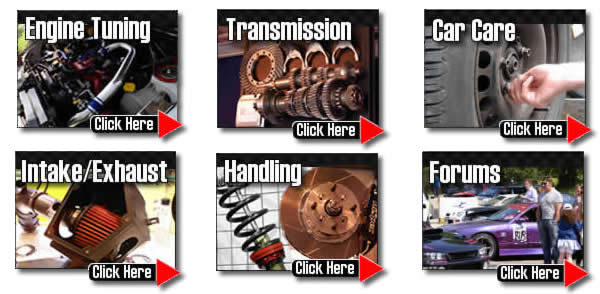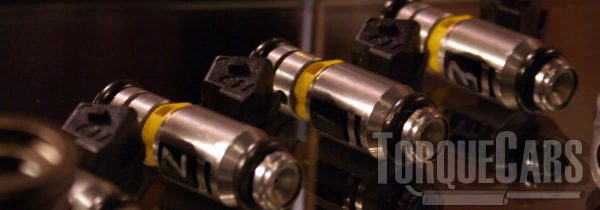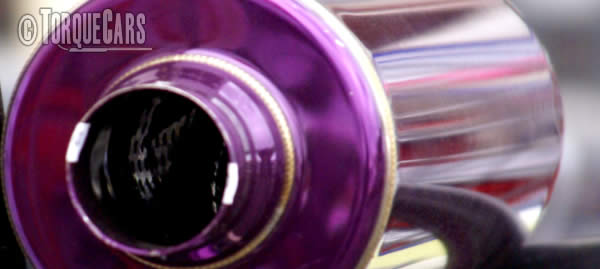Tuning the Rover 400
"Thank you for reading our Rover 400 tuning article."
The 400 is a great car modification project to play with. With the right mods your 400 can be transformed into a stunning project. Don't waste money, do your homework and follow our unbiased guides to each performance upgrade to avoid wasting money.
The Rover 400 have loads of potential and with a few sensible modified parts like remaps, turbo kits and camshafts you will dramatically maximize your driving pleasure.
TorqueCars will look at 400 tuning and highlight the best modifications.

Handling/Suspension upgrades
Many 400 owners uprate the handling of their cars with suspension upgrades as a priority, this will certainly increase your enjoyment of the car.
Fully adjustable suspension allows you to fine tune the handling of you 400 dramatically benefitting your drive.
We would go to a maximum drop of 30mm - 42 mm. on most models. You risk grounding out if you go lower than this.
Our aim in engine tuning should be to increase peak power at the top end.
Smaller engines do not provide much of a return in terms of power so start with a bigger engine. Engine swaps are a good option if you have a small engine size.
Power mods.
Typically these modifications are usually installed by our members, decide how far you want to push your car before you start.
R8 1990–1998
- 1.4 L K-Series I4 (petrol)
- 1.6 L K-Series i4 (petrol)
- 2.0 L M-Series I4 (petrol)
- 1.8 L PSA XUD7 TE I4 (turbodiesel)
- 1.9 L PSA XUD9 A I4 (diesel)
HH-R 1995–1999
1995-1999
- 1.4 L K-Series I4 (petrol)
- 1.6 L K-Series I4 (petrol)
- 1.6 L Honda D16 I4 (petrol)
- 2.0 L T-Series i4 (petrol) "Tomcat"
- 2.0 L L-Series I4 (turbodiesel)
Engine swaps were popular, the 1.4 block was very similar to the 1.8VVC and there are lots of options for the 1.8 VVC including a turbo conversion.
The 2.0T Tomcat really made this a fast car but was not one of the easiest conversions to pull off.
Getting the right modified upgrade kits for your planned usage of the car is a time and money saver. Stage 3 motor sport mods just won't work well on the road making the car difficult to drive.
Please watch our introduction Video tutorial to car tuning. Be sure to subscribe and support our new channel.
How to tune your car
- Improve the handling
Focus on Suspension improvements, such as coilovers and make sure the bushings are in good order and that the alignment is correct. Then focus on improving the brakes, with a big disk brake conversion kit and fast road brake pads.
- Remove restrictions
Focus on the intake and exhaust with filters being the common point of restriction in a tuned car. Intercoolers may also become restrictive on turbo engines so this may also need to be uprated.
- Burn more fuel & air
Increase the fuelling so it matches the air coming into the engine. The ratio is important so you need to improve the fuel pump and injectors, so the head mods, big valve conversions, fast road camshafts and forced induction upgrades extra supply of air is adequately met.
- Test and replace any weak parts
Weak areas are commonly the clutch, the turbocharger and pistons and crankshaft in a highly tuned engine. Makes sure these components will cope with your power aspirations.
- The Tune or Remap
A cars ECU controls the fuel, timing, spark and even the turbo in some cases, so to fully extract your gains you should remap the car last and this will fully release the power. Some cars are easy to map, and others require piggyback ECU's or aftermarket ECU's but this is the most vital step of your tuning project.
Modifying to Stage 1:
Remap, Panel air filter, Sports exhaust, Suspension upgrade (drop 30mm - 42 mm.), Alloy wheels, Lighter flywheel.
Modifying to Stage 2:
Fast road cam, Ported and polished head, high flow fuel injector, fuel pump upgrades, Power/Sport clutch.
Modifying to Stage 3:
Competition cam, Sports gearbox, Internal engine upgrades (pistons/head/valves), Adding or upgrading forced induction (turbo/supercharger), Engine balancing.
Your aim when tuning the engine should be a flat and wide torque output. You don't want all the torque to be at the top end of the rev range unless you are creating a competition car.
The Rover MEMS could not be remapped, but piggyback ECU's are around, ICON RACE was one we used.
The aim of our articles is to give a little insight into the world of modding performance parts and point you in the right direction, our forum is the place to go for detailed advice and tips on your tuning project, the best performance mods and all aspects of modding cars.Fast road cams offer one of the biggest performance gains for your money as far as a solitary tuning mods goes on a NASP engine.
The intake & exhaust valve timings play a large part in your cars power band, but be careful here, getting this wrong can upset the idle and make the car challenging to drive in traffic. You'd need to follow a camshaft upgrade with other mods and finish with a reflashed ECU to fully release the power gain.
Don't forget to uprate the fuelling when you are increasing the power - it makes the car more thirsty.
Using high octane fuel is another option if you find you are suffering from detonation or premature ignition on your Rover project after fitting other modified upgrades.  To get sufficient fuel you may need to improve the injectors on your engine.
To get sufficient fuel you may need to improve the injectors on your engine.
Uprate the fuel pump to cope with the extra fuel requirements of your tuned 400's uprated injectors.
Intake and Exhaust Tuning.
Now we move on to the intake and exhaust and ensure proper flow through the engine.  Contrary to popular belief there is usually a small power gain achieved by fitting an induction kit, they only work well and are recommended after you increase the engines power to the point where the standard air intake box cannot cope!
Contrary to popular belief there is usually a small power gain achieved by fitting an induction kit, they only work well and are recommended after you increase the engines power to the point where the standard air intake box cannot cope!

Maximum power gains come from a full induction kit with a cold air feed on heavily tuned engines, this can be sited within an air box but a panel filter should suffice for most applications. TorqueCars suggest you use a panel air filter as these are easy to clean and maintain and generally perform better than paper ones.
Do not go with the widest exhaust you can get this will slow the exhaust rate - the best exhausts for power gains are usually between 1.5 to 2.5 inches. It is the shape and material more than the bore size.
Head work including a polish and port and 3 or 5 angle valve job will really help to release the potential of the engine. Your clutch can seriously let you down as you increase the power if it starts to break and the standard clutches are only ever good for power gains of up to 40%. Fit an upgraded clutch to avoid power losses through the transmission. The best mods that we recommend for your 400 are a remap especially on a turbo, a fast road camshaft and sports exhaust, with a good air intake.
Turbo engines are just asking to be flashed. You will see large power gains on most modern turbo charged cars including diesels making a remap one of the most cost effective and large modifications for your money.Despite the large cost involved adding forced induction to a NASP engine will give large power gains. It is generally simpler to bolt on a supercharger than it is to get a turbo working. It is harder to map a turbo as the boost comes on exponentially with revs.
It is simpler to map a supercharger because the boost is directly proportional to engine speed on a linear curve. Alternatively you could perhaps add water injection to minimise knock.
Alloy wheel upgrades.
Alloy wheels will help the brake cooling and are usually less heavy than the steel ones. Pay attention to your choice of tyres (tires) for your car, a good track legal slick tire can really enhance your cars handling. It is worth noting that although they can look cool on the 400 big alloy wheels will actually decrease your performance. The larger you go the lower your acceleration will be - this to the change in your effective final drive ratio.
For this reason we would advise sticking to a maximum wheel size of 16 inches, although we know some of our members have installed larger rims with no problems.
For more information on Tuning your car please join us in our friendly forum where you can discuss 400 options in more detail with our 400 owners. It would also be worth reading our unbiased Rover tuning articles to get a full grasp of the benefits and drawbacks of each modification.
Please help us improve these tips by sending us your feedback in the comments box below.
We love to hear what our visitors have got up to and which mods work best for them on each model of car. Comments are used to improve the accuracy of these articles which are continually updated.
If you liked this page please share it with your friends, drop a link to it in your favourite forum or use the bookmarking options to save it to your social media profile.
Check out TorqueCars new YouTube channel, and see their awesome new content...
Feedback
Please use our forums if you wish to ask a tuning question, and please note we do not sell parts or services, we are just an online magazine.
Help us improve, leave a suggestion or tip
